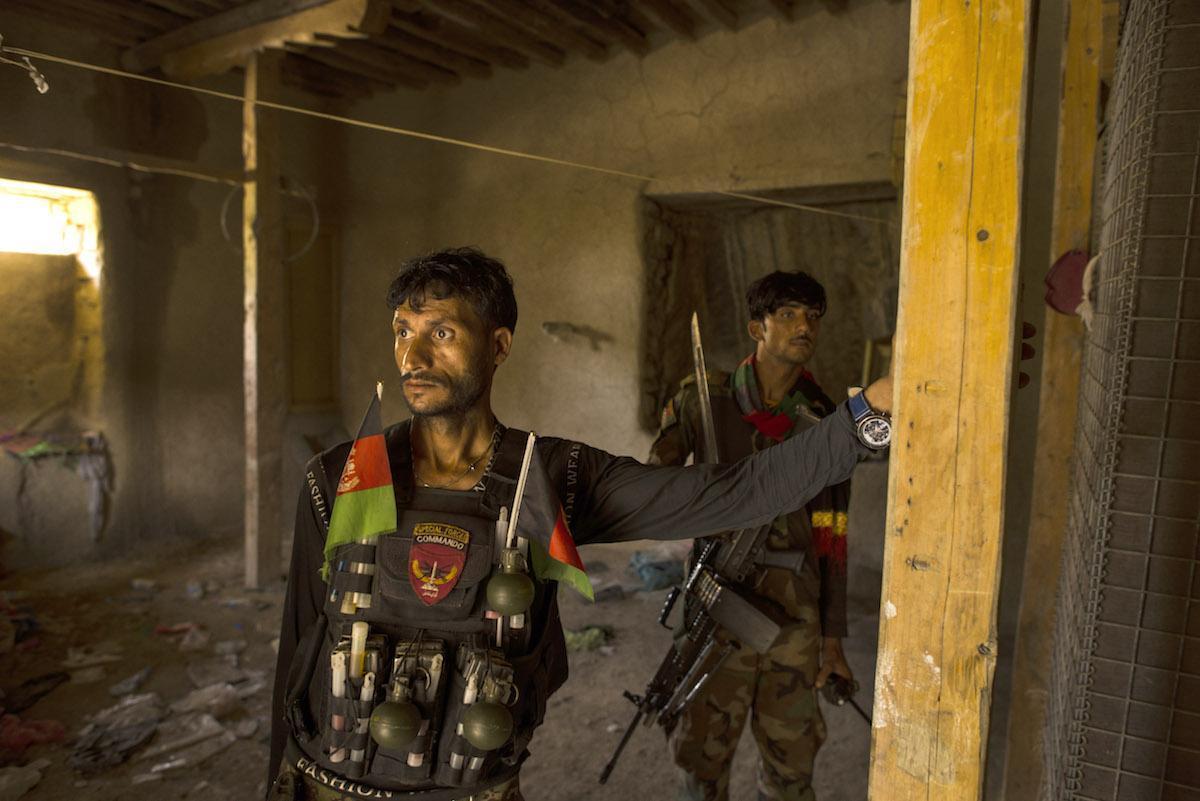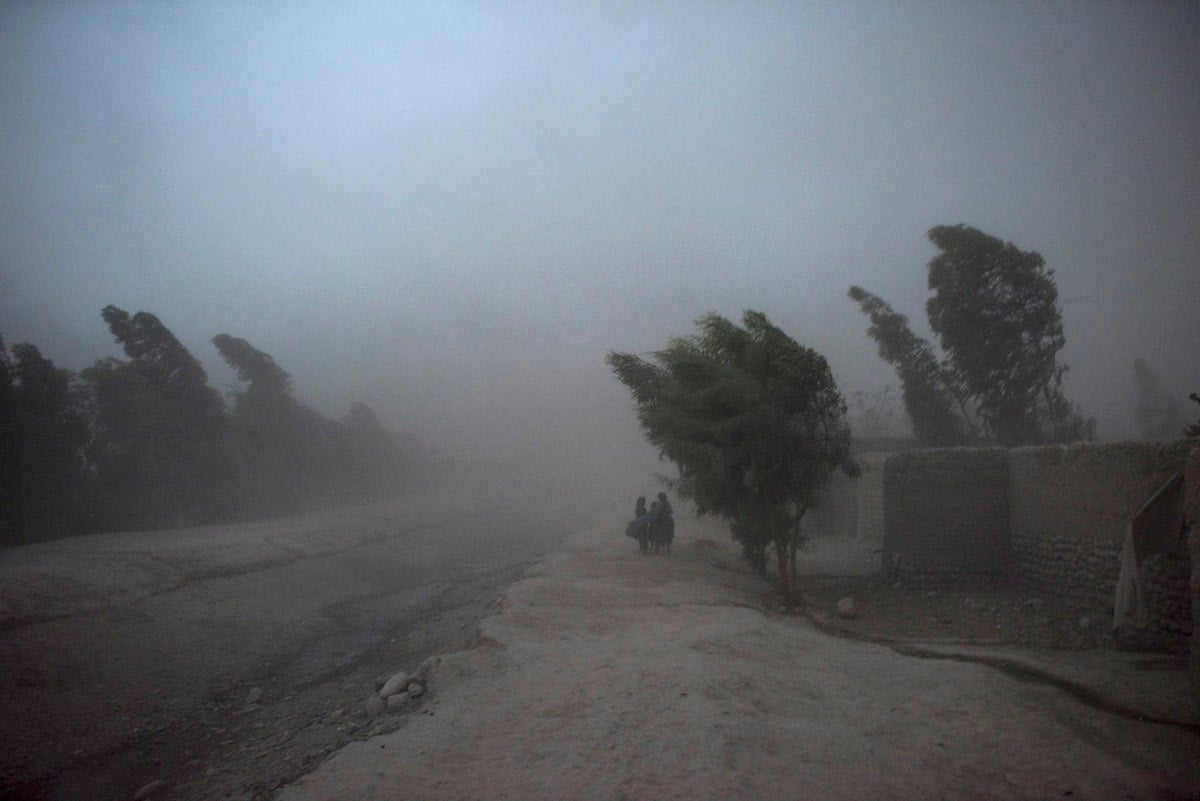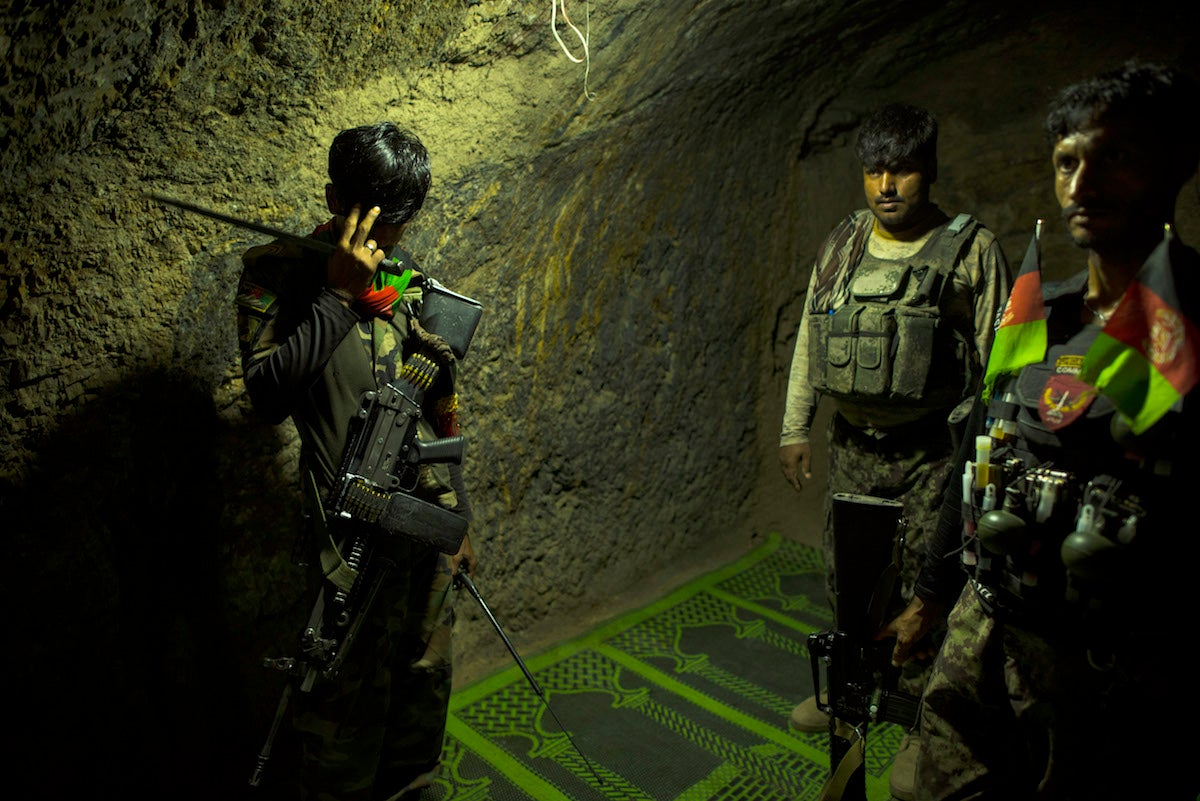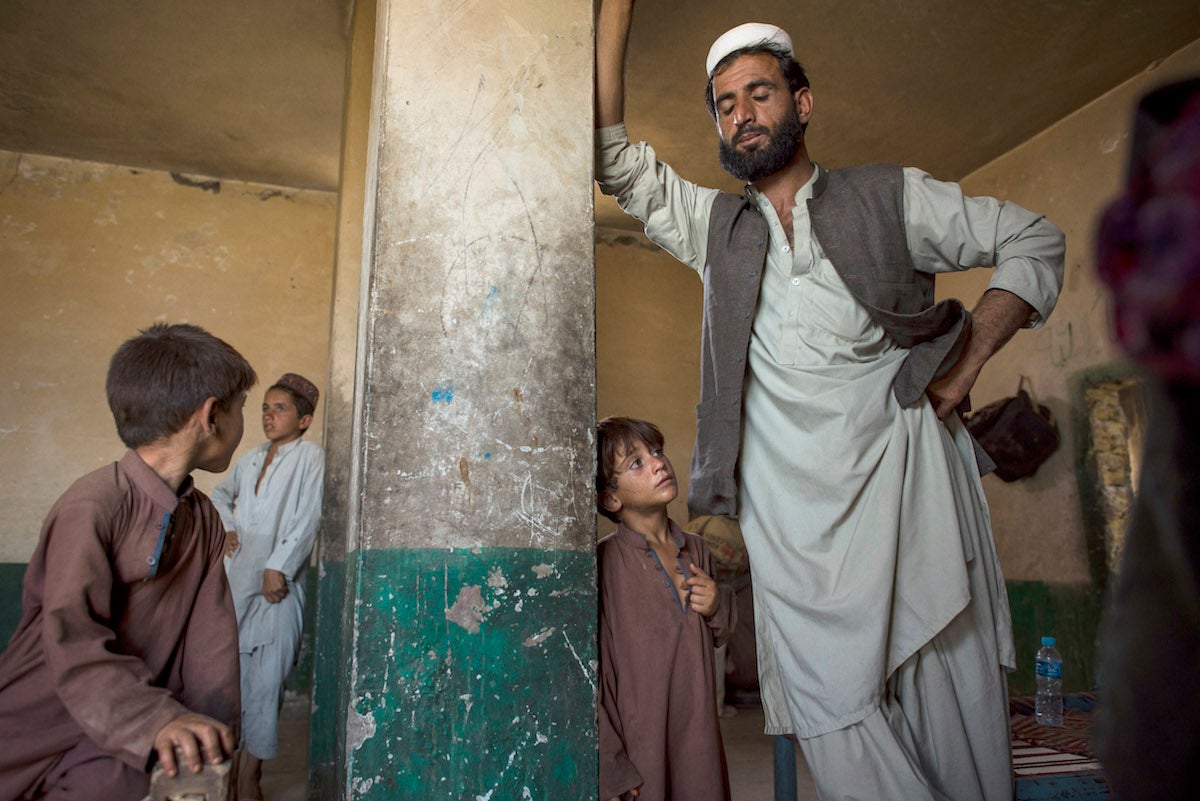Behind the frontline in the fight to 'annihilate' Isis in Afghanistan
The operation to bring down the Islamic State in Khorasan – or Isis-K – is now into its fourth month of unremitting warfare

Your support helps us to tell the story
From reproductive rights to climate change to Big Tech, The Independent is on the ground when the story is developing. Whether it's investigating the financials of Elon Musk's pro-Trump PAC or producing our latest documentary, 'The A Word', which shines a light on the American women fighting for reproductive rights, we know how important it is to parse out the facts from the messaging.
At such a critical moment in US history, we need reporters on the ground. Your donation allows us to keep sending journalists to speak to both sides of the story.
The Independent is trusted by Americans across the entire political spectrum. And unlike many other quality news outlets, we choose not to lock Americans out of our reporting and analysis with paywalls. We believe quality journalism should be available to everyone, paid for by those who can afford it.
Your support makes all the difference.A recurring rumble of explosions echoes off the barren, boulder-strewn slopes of the Spin Ghar mountains, each ordnance aimed wishfully at redoubts where Islamic State militants are suspected of hiding. Afghan and US special forces listen in on enemy chatter, intercepting dozens of their radio channels. American AC-130 gunships and F-16 fighter jets whir in circles overhead, at low altitude, waiting for strike orders. Soldiers on the ground man the mortars.
The operation against the Islamic State in Khorasan – or Isis-K, as the Syria-based group’s Afghan contingent is known – is now into its fourth month of unremitting warfare. The US military has pledged to “annihilate” the group by year’s end, and the redoubled assault has contributed to a spike in US air strikes to levels not seen in Afghanistan since President Barack Obama’s troop surge in 2012. One in five of those strikes is against Isis-K, despite it controlling only slivers of mountainous territory.
The battle is lopsided, but each day the frontline here in Achin district moves back only slightly. Both local intelligence officials and the US military believe that Isis-K is replenishing its stock of fighters almost as quickly as it loses them. A sense that this may be an indefinite mission has set in.
Soon after its founding in 2014, Isis-K descended into this district and established it as its stronghold. Entire villages emptied as word of the group's mercilessness spread. Fighters infamously strapped defiant local clerics to explosives and filmed their detonations. For nearly three years, Isis-K held firm not just in the Spin Ghars but in the vacated villages in the fertile valley beneath them.

In April, the US military dropped its largest non-nuclear bomb, a MOAB - nicknamed “the mother of all bombs” – on a cave complex in one of Achin’s valleys, known as the Momand. It is unclear how many fighters, if any, were killed. The MOAB – which felt so forceful that “every ant in the valley must’ve died,” said one villager – was followed by weeks of air strikes on compounds that ISIS-K fighters had held for two years.
On a recent trip up the valley, the bodies of at least four were still there, lying in abandoned fields overgrown with wild cannabis. The corpses were mostly just bones after months in the sun.
Over the past three years, Isis-K has succeeded in carrying out ghastly attacks in both Afghanistan and Pakistan. But as Islamic State territory in Iraq and Syria is whittled away, coalition forces here are worried that Afghanistan's notoriously ungovernable eastern provinces could become a safe haven for fleeing fighters and a new staging ground for attacks on the West.
“We believe that Isis-K is not currently able to launch attacks because they are essentially being hunted,” said Capt William Salvin, spokesman for the US military here. But he did not refute the assessment of a local Afghan intelligence officer in Achin, who spoke on a condition of anonymity because he was not authorised to speak to the media: In terms of numbers, Isis-K has not been severely reduced. The battle is looking more like one of attrition.
While the Pentagon maintains that Isis-K is down to about 1,000 fighters across Afghanistan, from a high of 2,500 in 2015, the Afghan intelligence officer surmised that there were more than 1,000 in Achin district alone.
The fierce conflict also is scattering fighters across a wider swath of the mountainous east, ensuring a longer, more dispersed mission. Last week, the Pentagon announced that a US drone strike killed Abu Sayed, Isis-K’s leader, or emir. That took place in neighbouring Konar province, indicating that the fighting has spread at least that far.

Most of Isis-K's fighters are thought to be Pashtuns, with few, if any, coming from Iraq and Syria. According to Salvin, the United States sees Isis-K as more of an “authorised franchise of Isis-main” than the Islamic State’s operation in Libya, which is more closely tied to the fighting in the Middle East. Instead, Afghan analysts say, Isis-K derives much of its support from Pakistan’s military establishment.
“In Nangahar, it is Pakistan’s game,” said Davood Moradian, director of the Afghan Institute for Strategic Studies, referring to the province in which Achin is located. Pakistan has launched its own military operation against Islamist militants on its side of the Spin Ghar range, but Moradian was sceptical that they shared the goal of the group's elimination.
“Pakistan’s military operation against Daesh” – an alternate name for the Islamic State – “is more of a disciplinary mission: Stop your internal disagreements and concentrate on the target we’ve agreed upon, namely, the Afghan state,” he said.
Pakistan has always denied playing a destabilising role in Afghanistan, but its neighbours’ ongoing instability has proved hugely lucrative for Pakistan’s military, which has ruled the country for almost half its 70-year existence. George W Bush’s and Barack Obama’s administrations gave the Pakistanis a combined $33.4bn (£25.5bn) in aid, and there is little evidence their support for Afghan militants has stopped.

Members of the US Congress have been calling for years for a drastic reduction or elimination of security assistance to Pakistan, as well as ending its status as a major non-Nato ally – or even designating it as a state sponsor of terrorism.
Defence Secretary Jim Mattis has said that the Trump administration’s new Afghanistan strategy, expected this month, will have a “regional component”, but it is unclear if that means a curtailment of US aid to Pakistan. In fact, a hostile Pakistan might well pose a greater threat to the US mission here.
Even so, exasperation toward Pakistan runs high here.
“That people are even asking the question ‘Should the US stop giving money to Pakistan?’ shows the silliness of the discourse in Washington,” said Moradian. “It is like asking if we should stop giving heroin to an addict. Of course. It is the very first thing you must do. Otherwise, you will keep fighting permutations of the same adversary here for eternity.”
During a recent meeting of his full national security team, President Donald Trump reportedly focused on Pakistan’s role in harbouring Islamist militants, and national security adviser HR McMaster pressed for a more punitive approach.
Among the Momand Valley’s former residents, the belief that “Pakistan wants to destroy Afghanistan” is near universal. People eagerly share conspiratorial evidence of Pakistan’s hand in their calamity. Daesh leaders all speak Punjabi, one of Pakistan’s main languages; their long hair and beards are just wigs supplied by the Pakistani government; one man said that he had seen fighters swimming in the Momand River, and one had a big Pakistani flag tattooed on his biceps.

Many of these people's homes were destroyed by US air strikes because they were suspected of being used by Isis-K as hideouts. Most shops in Shadal Bazaar, the valley's main market, were reduced to rubble, too, although the fighting is now far enough into the mountains that some butchers and barbers have dared to rebuild.
Yet the Momand Valley possesses a mesmerising beauty that makes those who fled yearn to return. If they do, they will find the evidence of Isis-K's presence not just in their ruined homes but in the few that were left standing. Isis-K converted Kitab Gul's home into a prison, for instance, and the disturbingly small cages in which they locked those accused of petty crimes such as smoking cigarettes are still lying about. The Afghan army has requisitioned Gul's home as a lookout post.
Despite the US bombing of their homes, and despite US support for Pakistan, locals were largely positive about the campaign to “annihilate” Isis-K.
“They are not Muslim. Their only religion is cruelty, and there is nothing crueller than what they have done to us,” said Mir Jamal, a proud but exhausted father of nine who has spent two years loading trucks for meagre sums since escaping his village with nothing but the clothes on his back. When fighters swept into the valley, Jamal’s brother and elderly father stayed behind to protect their home. They were caught. His brother's forearm was burned with embers from a fire, and he was waterboarded. His father was pitilessly beaten and now barely speaks.
“My father had red cheeks. He prayed five times a day. He had a big chest, and he farmed late into his life,” said Jamal, fighting back emotion. “How can we ever accept Daesh?”
© Washington Post
Join our commenting forum
Join thought-provoking conversations, follow other Independent readers and see their replies
Comments